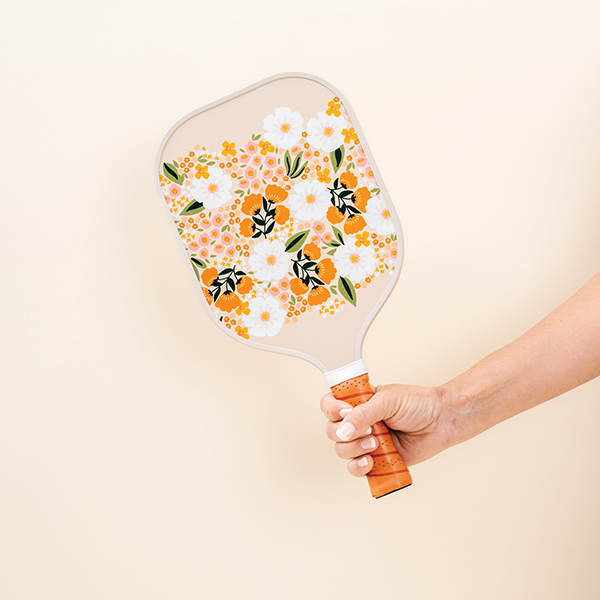Think Pink
Article Resources
Amy Fonville
Tallulah Belle, Rochester, MI
www.tallulahbelleboutique.com
Kat Gordon, Founder, Creative Director
Maternal Instinct, Palo Alto, CA
www.maternalinstinct.com
Calico Juno Designs
Bronx, NY
www.calicojunodesigns.com
Bonnie Ulman, President, The Haystack Group
Atlanta, GA
www.haystackgroup.com
Women’s enormous buying power translates to a lucrative demographic segment as long as you know what makes them tick.
Women make up half the population – 50.8%, to be precise, according to the U.S. Census Bureau – but they impact the majority of all purchasing decisions.
A quick look at the numbers, and you’ll see that their buying power is extraordinary: Women account for $7 trillion in consumer and business spending in the United States, they make or influence 85% of all purchases, and over the next decade, and they are predicted to control 66% of consumer wealth, according to MediaPost, an online news resource for advertising and media research.
It’s easy to understand the importance of tapping into this powerhouse demographic, but how do you do it effectively? In recent years, the rules have changed. Retailers who make mistakes not only cost themselves sales; they could potentially risk their businesses.
“Marketers used to talk about brand loyalty as the holy grail of sales,” says Bonnie Ulman, co-author of Hustle: Marketing to Women in the Post-Recession World (Paramount Marketing Publishing; May 2013) and president of the Haystack Group, an Atlanta-based consumer insights firm. “But since the Great Recession, women aren’t thinking about brand loyalty. They got burned and 62% have a greater sense of distrust.”
Ulman says women want value. They go into a purchase looking for a deal. They want transparency from the stores they frequent, and they want the store to solve a problem not just sell a product.
“If somebody opens up down street and offers her those things better than you do, she will lily pad hop there and buy from them,” she says. “If I’m a gift shop owner, I’m paying attention to all of the things I can deliver to my customer.”
The demographics
 If you’re going to think pink and market to women, you’ve got to understand how best to approach them. A study of 2,000 women conducted by Harbinger Ideas, a Toronto-based marketing consulting firm that focuses on women, found that only 28% of women decide what products or services to buy without seeking help. Most spend time researching before buying, looking at online reviews or consulting with friends. And women account for 58% of all total online spending; in fact, 22% shop online at least once a day.
If you’re going to think pink and market to women, you’ve got to understand how best to approach them. A study of 2,000 women conducted by Harbinger Ideas, a Toronto-based marketing consulting firm that focuses on women, found that only 28% of women decide what products or services to buy without seeking help. Most spend time researching before buying, looking at online reviews or consulting with friends. And women account for 58% of all total online spending; in fact, 22% shop online at least once a day.
Clearly access to product information is key, but so are their generational values. Anthem Worldwide, a branding strategy firm based in New York, breaks the female market down into age groups, and identifies traits and special needs of each group:
Millennials, born between 1981 and 2000, are in “aspiration” mode. They have a keen understanding of the job market. They also expect connection through technology. Generation Xers, born between 1965 and 1980, have found their purpose and are on their life journey. Most are married or in a relationship, and many have children. They value health, wellness and productivity. Finally, Baby Boomers, born between 1946 and 1964, are looking for “what’s next.” They have a sense of purpose and accomplishment, and are concerned with staying vibrant.
Another important section of the female market is moms. The U.S. Census Bureau estimates that there are 82.5 million mothers of all ages in the U.S., from Baby Boomer “soccer moms” to the Gen X “iMom.” Only 20% of mothers said that advertisers were doing a good job connecting with mothers, according to Trillion Dollar Moms by Maria Bailey and Bonnie Ulman. And having an Internet presence is vital to moms; 90% are online vs. just 76% of women in general. Moms visit blogs, message boards and product fan pages to research purchases and get recommendations, according to the Consumer Electronics Association.
Common mistakes
Women’s rising spending power makes it imperative for retailers to focus on this powerful segment and not consider it a “niche” or a passing fad, says Kat Gordon, founder and creative director of Maternal Instinct, a Palo Alto, CA-based marketing consultant. One of the mistakes she sees retailers make when selling to women is undervaluing the power of appreciation.
“Retailers show a lack of respect for customers in subtle ways,” Gordon says. “It’s the little acts of not caring that can kill a business, such as not answering your phones, having too few sales clerks, being out of stock of key seasonal items, not having a place to put a wet umbrella, or not accepting credit cards.”
She suggests that retailers train their salespeople to know the merchandise and be good listeners so they can solve problems. Don’t hire “elbow leaners,” she says.
Another mistake is making assumptions about customers, says Ulman. “Just because she’s always shopped with you doesn’t mean that she will continue,” she says. “Do not take the customer for granted.”
 Bonnie Riconda is the owner of Calico Juno Designs in Bronx, NY. Online for 11 years, she opened a brick-and-mortar storefront in 2009, offering handmade jewelry as well as gift items such as home décor and apparel. Her customers tell her about another mistake retailers make when selling to women.
Bonnie Riconda is the owner of Calico Juno Designs in Bronx, NY. Online for 11 years, she opened a brick-and-mortar storefront in 2009, offering handmade jewelry as well as gift items such as home décor and apparel. Her customers tell her about another mistake retailers make when selling to women.
“The owner and employees of some retail stores treat customers differently based on what they’re wearing,” she says. “We treat everyone the same. You can’t judge anyone by his or her appearance. We try to tailor the shopping experience for each person, asking exactly what they want or are looking for, what kind of design they like to wear, the price point they’re needing, and more, without being too pushy.
“I also never let anyone go out the door without thanking them for coming in, even when they have not bought anything.”
The recession’s impact
Pre-recession, women were in acquisition mode, says Ulman. But after the 2007 economic downturn, things changed.
“Women were surprised by the severity and length of the recession,” says Ulman. “They’re now in the mode of editing life instead of acquiring. Women look for products and brands that bring value to their life instead of take up space.”
This impacts gift shop owners, says Ulman, as women are less likely to invest in high-priced items than they are on small things that they can purchase that will give them a lift. “We call it the lipstick effect,” she says. “At depth of the recession, women would still go out and buy lipstick.”
The same goes when shopping for others: “They are investing time in choosing the right gift but at a lower price point,” Ulman says.
Smart strategies
In order to succeed in today’s economy, gift shops need to become problem solvers, says Gordon.
“Make it easy for her to get everything done at your store,” she says. “Offering the gift, gift wrap, card and shipping makes you the hero. And if a lot of out-of-towners shop in your store, make sure you have bubble wrap and boxes for items to take home on a plane.”
The store layout is also important. Gordon suggests merchandising products to create scenarios that are relational.
“This is a trick that realtors do when staging a kitchen,” she says. “They set out two wine glasses on a table, for example, and create an atmosphere.”
The relational element should continue with your staff. Gordon says it’s vital to train clerks to be helpful, to make eye contact, and greet and thank customers.
Riconda builds relationships with her customers by sending out a monthly newsletter.
“We share product information as well as tips on the hot colors and styles for the season,” she says. “Our customers find this very helpful.”
It’s also important to think outside your store, says Gordon. “If you have a website, make sure it’s optimized for mobile usage,” she says. “Women spend a lot of time on-the-go and increasingly rely on their smartphones to check store hours and get directions. Mothers especially value mobile sites; they spend an average of 17 days a year in the car with their kids.”
Women are using mobile devices to do the shopping, adds Ulman. “She researches carefully and comprehensively before making a purchase,” she says. “She’s even doing research while she’s on a showroom floor, using her phone to look up product reviews or competitive price. Just because she’s in store, doesn’t mean she’s going to buy it in the store.”
This makes follow through critical. “Engage with her,” says Ulman. “Make the transaction itself as pleasant as possible. Invite her in for special events. Offer her coffee while she shops.”
 Amy Fonville, owner of Talulah Belle in Rochester, MI, says the strategy at her store is all “about the Ps – people, passion, product and purpose.”
Amy Fonville, owner of Talulah Belle in Rochester, MI, says the strategy at her store is all “about the Ps – people, passion, product and purpose.”
“Many of our clients come in for ‘retail therapy,’” she says. “We are passionate about what we do and that makes it easy to engage with our customers. We think of our clients as friends. We really try to understand where they’re coming from. It’s not about selling a widget, it’s all about experience.”
Fonville holds trunk shows, which are popular with her clientele. She also participates in her city’s active downtown association, hosting special events such as girls’ nights out. Her store offers free gift-wrap with a signature black and white design. And she sends out handwritten letters to customers, thanking them for their business.
“We’re old school here,” she says. “Our letters are personal and heartfelt. We don’t have a form letter.”
Fonville is hitting all of the five things Ulman says women look for in a retailer.
“They look for authenticity, dependability, empathy, good customer service and good value,” she says. “If you can deliver that, you are setting yourself up for success.”






















